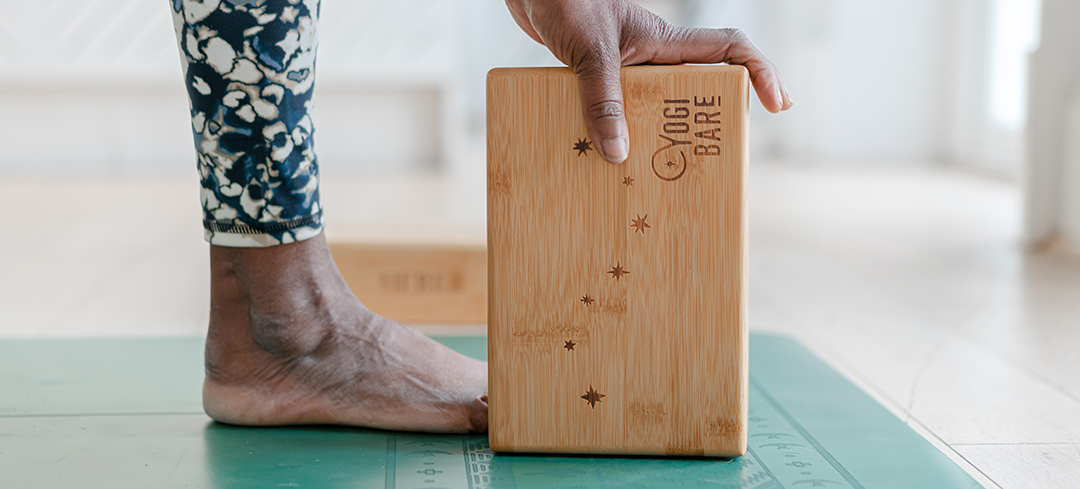What is a yoga block?
A yoga block is an essential part of any yogis kit, whether you are a newbie or a seasoned professional. Yoga blocks are a rectangular block, usually made from a sturdy material, such as foam, bamboo, wood or cork. Yoga blocks are approximately 22 cm x 15 cm x 7 cm, big enough to get your paws around and small enough to support the specific areas of your body.
Yoga blocks first appeared on the yogi scene in the 1970’s. The purpose of their introduction was to make yoga poses more accessible to everybody and every body. The block acts as a support and an extension of the body to help new yogis perform poses correctly and with minimal risk of injury. Yoga blocks were also able to help yoga enthusiasts reach those more advanced poses with a little helping hand easing them into it.
Here at Yogi Bare we have two types of yoga blocks so you can get your paws on the perfect accessory for you. The Bamboo Support Block offers unique support for a unique practice, solid in its structure that can fully support your body weight. Our Firm Foam Support Block on the other hand is a little softer and offers more gentle support for your spine and pelvis in restorative poses.
How do I use a yoga block?
One of the biggest questions we get from our Yogi Bare’s is ‘how do I use a yoga block?’. There are so many uses of a yoga block and multiple ways you can use one. This is the beauty of including it in your yoga kit bag!
Uses of yoga blocks:
Yoga blocks can offer you the physical support you need when you are trying out a new pose. Your yoga block will be there to help you progress at your own pace with a little extra confidence. For example if you are trying out the Crow Pose for the first time you may be struggling to lift your feet from the ground whilst still maintaining balance. Using your yoga block, you can push your feet off the ground from the elevated height of your yoga block.
The third use of yoga blocks is their ability to add length to your body. For example, if you struggle with flexibility and cannot touch your toes (yet!) your yoga block can simply shorten the distance between your hands and the floor. By placing your hands on the blocks, you will be able to ease into the stretch without damaging your lower back muscles and gently stretching your hamstrings. This will allow you to tailor your yoga poses to match your current level of flexibility, minimising pain and risk of injury.
Some yoga poses require a rather advanced level of flexibility. For example the Side Angle Pose requires you to touch the ground with one hand and reach up with the other. If you stretch too far to touch the floor, you may be restricting your breathing, have a collapsed chest and rounded shoulders. This is where the support of your lovely yoga block comes in! If you place your yoga block on the floor you can use its support to find balance and perform the correct expression of the pose with the correct alignment.
One of the most important uses of yoga blocks is their ability to prevent injury and minimise the risk of pulling any muscles. Yoga blocks can offer additional support to your body, for example your knees and hips.
If you are sitting in the Hero Pose you may feel discomfort and strain on your knees when stretching your thighs. By simply sitting on your yoga block you will be lifting your hips off the floor and easing the stain on your knees. Eventually you will be able to do this full pose comfortably and without risk of injury. Until then, your yoga block has got your back (or bottom!).
For the seasoned yogis out there, there is still a spot in your kit for a yoga block. Yoga blocks can be used to deepen your stretches and add tension to your existing poses. For example you can use the weight of your block to hold when doing poses such as Warrior II and Warrior III or hold the block between your knees to strengthen your inner thighs. This can help you to build strength, flexibility and advance quicker.

Leave a comment